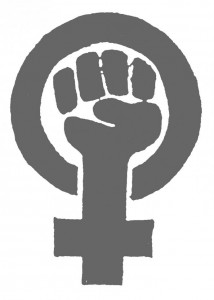Lately, I’ve been thinking a lot about leadership, what it looks like and what it means to be an excellent leader. I’ve had the good fortune to work with amazing leaders, and I’ve also been able to occupy leadership roles in many areas of my life. And while there are definitely certain qualities that make leadership easier, I want to dispel the myth of the “natural leader.”
First of all, I see that term applied to men and boys a lot. “Look how he takes charge and people automatically look to him for direction. He’s such a natural leader.” This is a fundamental misunderstanding of how men and women are socialized from a young age. Boys have more opportunities for leadership experience, and the skillset that is readily identified as optimal for leadership (assertive, authoritative, intelligent, charismatic, articulate, self-aware, and confident) is often ascribed to men.
These are not skills anyone is born with. These are skills that we are taught, that we are socialized to use. In fact, even when women have these attributes, they get completely different labels: pushy, bossy, stuck up, showy, know-it-all, self-obsessed, and conceited. Qualities that society does think of as feminine are also considered passive, sometimes even a weakness: compassionate, caring, nurturing, intuitive, and kind.
In reality, it takes both of these diverse skillsets to really flesh out the role of leader.
Second, even in a person that has all those skills, it still takes practice to learn how to apply them. Leadership is something we have to work at, that needs regular tweaking and evaluation. It’s something for which we need practice and support. This feeds directly back into my first point: men are often given leadership opportunities that women are not as they grow up. This teaches them valuable skills and gives them an opportunity to learn what works and what doesn’t. They also often have leadership role models who share the same gender as them, something women are short on.
This sets men up for success in leadership roles and often keeps women from even trying to become one. I was always somewhat aware of that, but over the past weekend it became readily apparent. I went to the Mid-Year conference for the National Student Nurses’ Association, and in one session, we discussed how men were still a minority in the nursing field (only 9.6%) Yet although men represent less than 10% of the nursing population, there are an abundance of nursing leaders who are men. Just on the board of the National Student Nurses Association (NSNA) alone, a little over 35% are men. That’s three and a half times the percent who are nurses.
If you compare this to women making up 51% of the United States population but only holding 15% of Senate slots and 16.6% in the House of Representatives, we really begin to see that the lack of female leaders is a problem that has deep roots.
 Here at the UMKC Women’s Center, I’m lucky. I get to see strong women occupying leadership roles and I get to learn from them. One of the objectives of the Women’s Center is to foster opportunities for growth and development among campus women. As a work study student at the Women’s Center, I’m encouraged to develop and hone leadership skills I can use throughout my life and future career. It’s why the Women’s Center is so important to this community, and why similar organizations are vital to other communities and campuses across the country. Leadership requires practice, and women deserve a chance to gain that preparation.
Here at the UMKC Women’s Center, I’m lucky. I get to see strong women occupying leadership roles and I get to learn from them. One of the objectives of the Women’s Center is to foster opportunities for growth and development among campus women. As a work study student at the Women’s Center, I’m encouraged to develop and hone leadership skills I can use throughout my life and future career. It’s why the Women’s Center is so important to this community, and why similar organizations are vital to other communities and campuses across the country. Leadership requires practice, and women deserve a chance to gain that preparation.
For more information about the UMKC Women’s Center and our events, please visit our website, like us on Facebook, follow us on Twitter, and follow us on Tumblr!
